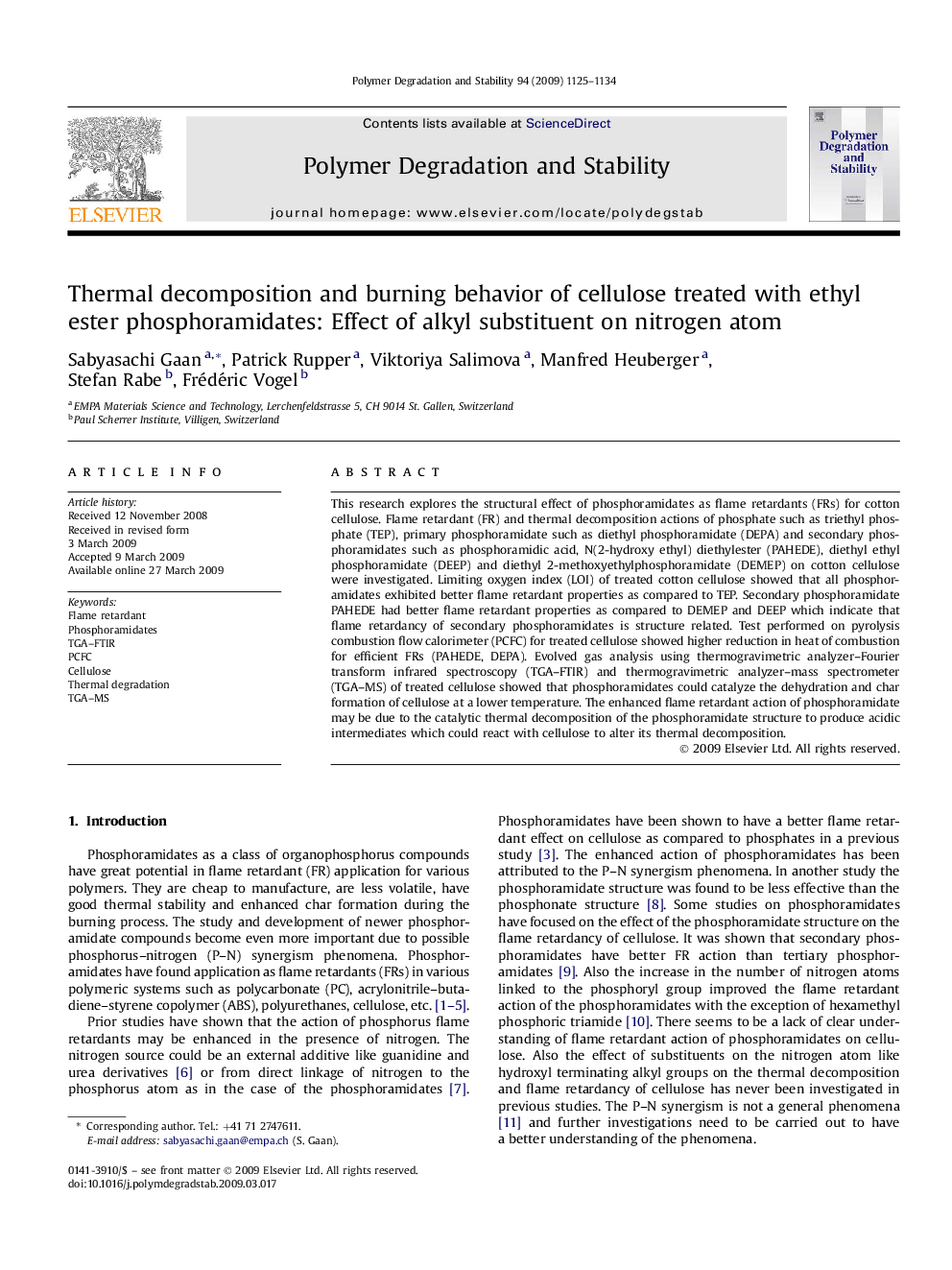| Article ID | Journal | Published Year | Pages | File Type |
|---|---|---|---|---|
| 5203149 | Polymer Degradation and Stability | 2009 | 10 Pages |
This research explores the structural effect of phosphoramidates as flame retardants (FRs) for cotton cellulose. Flame retardant (FR) and thermal decomposition actions of phosphate such as triethyl phosphate (TEP), primary phosphoramidate such as diethyl phosphoramidate (DEPA) and secondary phosphoramidates such as phosphoramidic acid, N(2-hydroxy ethyl) diethylester (PAHEDE), diethyl ethyl phosphoramidate (DEEP) and diethyl 2-methoxyethylphosphoramidate (DEMEP) on cotton cellulose were investigated. Limiting oxygen index (LOI) of treated cotton cellulose showed that all phosphoramidates exhibited better flame retardant properties as compared to TEP. Secondary phosphoramidate PAHEDE had better flame retardant properties as compared to DEMEP and DEEP which indicate that flame retardancy of secondary phosphoramidates is structure related. Test performed on pyrolysis combustion flow calorimeter (PCFC) for treated cellulose showed higher reduction in heat of combustion for efficient FRs (PAHEDE, DEPA). Evolved gas analysis using thermogravimetric analyzer-Fourier transform infrared spectroscopy (TGA-FTIR) and thermogravimetric analyzer-mass spectrometer (TGA-MS) of treated cellulose showed that phosphoramidates could catalyze the dehydration and char formation of cellulose at a lower temperature. The enhanced flame retardant action of phosphoramidate may be due to the catalytic thermal decomposition of the phosphoramidate structure to produce acidic intermediates which could react with cellulose to alter its thermal decomposition.
